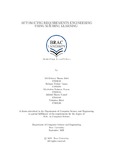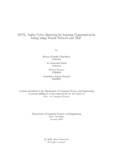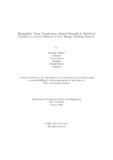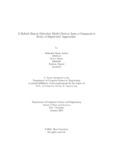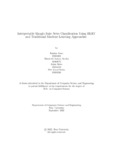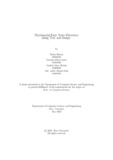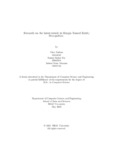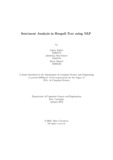Browsing by Subject "BERT"
Now showing items 1-10 of 10
-
An advanced hospital rating system using machine learning and natural language processing
(Brac University, 2023-05)Bangladesh is the host of 255 public and 4,452 private hospitals. Unfortunately, there is no reliable metric or resource available online to determine which hospital is better. Patients and their peers often find it ... -
Automation requirements engineering using machine learning
(Brac University, 2021-09)Machine learning algorithms help to automate the process in many di erent problem domains. In the eld of Software engineering. Requirement engineering is one of the rst stages of software development. This research ... -
AVCL: Audio Video clustering for learning Conversation labeling using Neural Network and NLP
(Brac University, 2022-01)Audiovisual data is the most extensively used and abundantly distributed type of data on the internet in today’s information and communication age. However, the necessary audiovisual data is challenging to retrieve because ... -
BanglaBait: using transformers, neural networks & statistical classifiers to detect clickbaits in New Bangla Clickbait Dataset
(Brac University, 2022-01)The art of luring us to click on certain content by exploiting our curiosity is recognized as clickbait. Clickbait might be aggravating at times because it is misleading. Several studies have worked on the detection of ... -
A hybrid rumor detection model derived from a comparative study of supervised approaches
(Brac University, 2023-01)In the current age of social media, information spreads like wildfire. Unfortunately, this also means that misinformation or rumors can spread easily. The spread of this misinformation can have negative consequences for ... -
Interpretable Bangla fake news classification using BERT and traditional machine learning approaches
(Brac University, 2022-09-29)Fake news is a type of content that is inaccurate or misleading and it is usually published with the intention of damaging a person or organization’s reputation. It has recently grown significantly in the online forum ... -
Multimodal fake news detection using text and image
(Brac University, 2023-05)Development in information and technology has made the communication easier in the recent decades. Easy access of social media is creating restraints amid of differentiating fake and real news. In the recent period the ... -
Recognizing sentimental emotions in text by using Machine Learning
(Brac University, 2022-10)As one of the fastest and most prominent deep learning technologies being fiddled with today, sentiment analysis is capable of revealing an individual’s true emotions by analyzing their facial speech, text, facial ... -
Research on the latest trends in Bangla named entity recognition
(Brac University, 2023-05)Named Entity Recognition (NER) is a sub-task of Natural Language Processing (NLP) that distinguishes entities from unorganized text into predefined categorization. In recent years, a lot of Bangla NLP subtasks have received ... -
Sentiment analysis in Bengali Text using NLP
(Brac University, 2023-01)Natural Language Processing, a branch of AI, teaches computers to understand speech and text in multiple languages. Machine learning or deep learning techniques can be used to develop rule-based models of human-spoken ...


